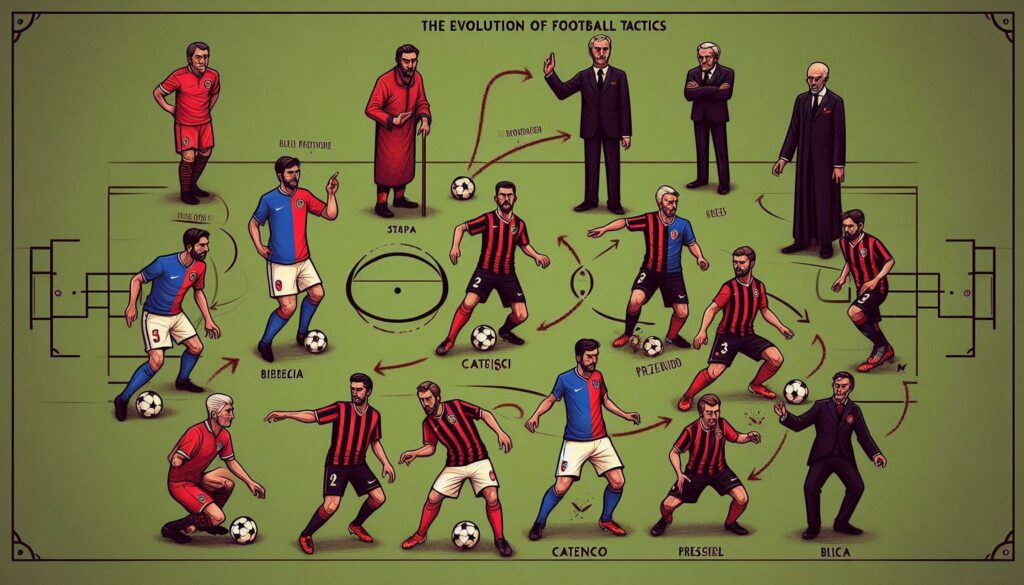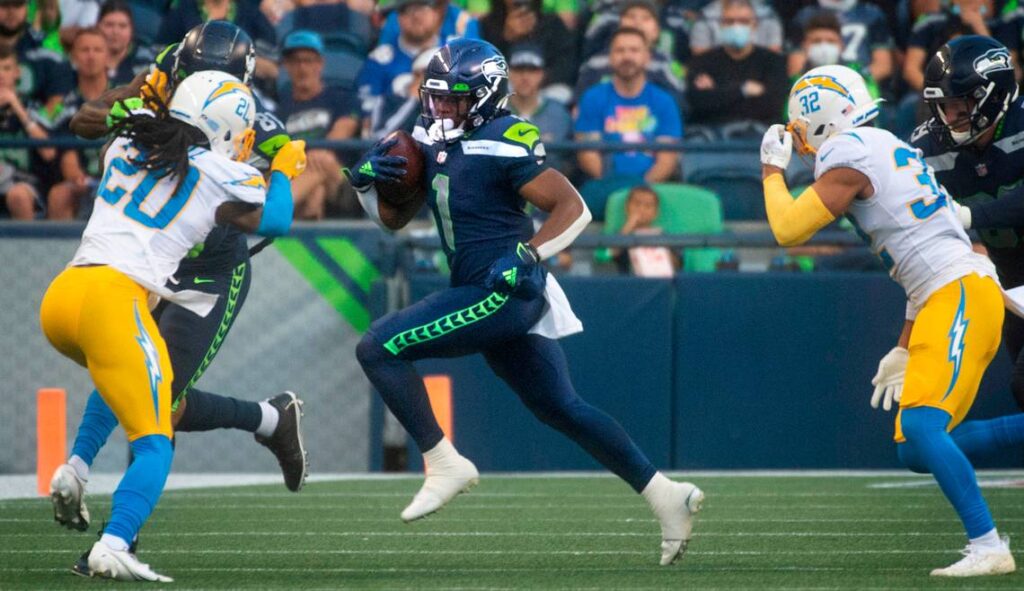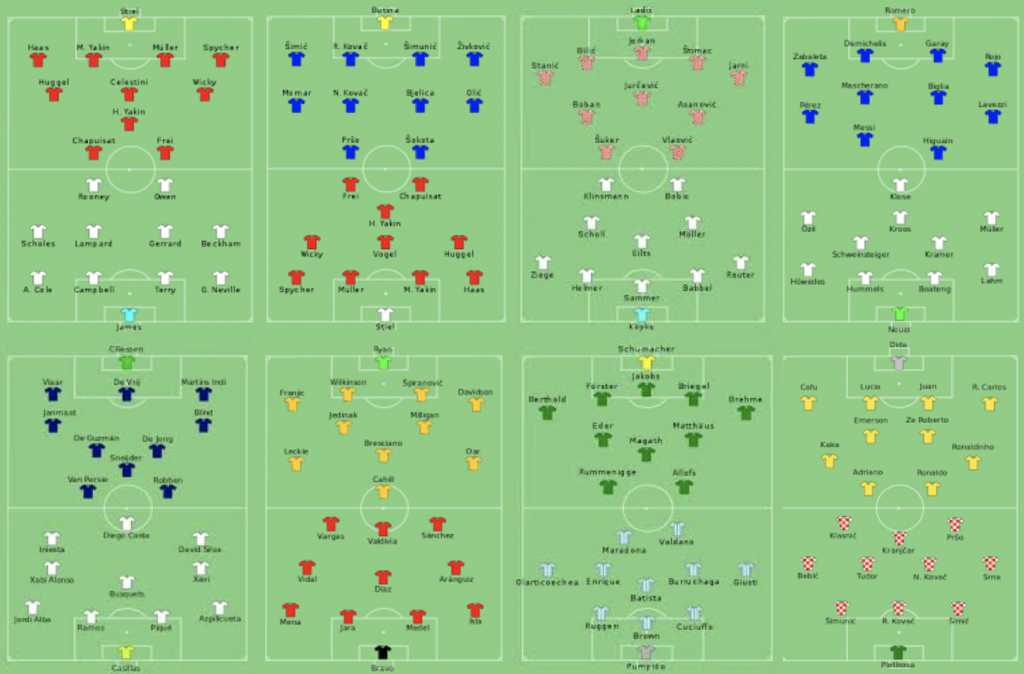From the early days of chaotic scrambles on muddy fields to today’s high-level tactical systems, football formations have played a crucial role in shaping how the game is played. Whether you’re talking about American football or association football (soccer), formations are the backbone of strategy, discipline, and performance.
In this article, we’ll explore the history of football formations, tracking their development across both versions of the sport—how they started, how they evolved, and what they look like today.
⚽ Part 1: Formation History in Association Football (Soccer)
🔹 Early Years: No Real Formation (1800s–1900s)
In the earliest soccer matches, formations were barely a concept. The emphasis was purely on scoring, and defensive structure was minimal.
- Common setup: 1–1–8 or 2–2–6
- Key feature: Attack-heavy, chaotic structure
Teams often played with 8 forwards, believing more attackers meant more goals.
🔹 1920s–1930s: The WM Formation Revolution

- Introduced by: Herbert Chapman of Arsenal (1925)
- Formation: 3–2–2–3
- Why it mattered: Created better balance between defense and attack
- Key innovation: Split midfield into two halves to manage possession and protect the backline
Impact: Marked the first shift toward modern tactical awareness.
🔹 1950s–1970s: Rise of Tactical Variations
- 4–2–4: Used by Brazil in 1958 and 1962 World Cups
- 4–3–3 & 4–4–2: Gained global popularity
Managers began to understand that spacing, possession, and transitions mattered more than raw numbers in attack.
Notable system: Catenaccio (Italy)
- Emphasized defense with a sweeper (“libero”) behind defenders
🔹 1980s–2000s: Possession and Flexibility
- Total Football: Popularized by the Netherlands in the 1970s and refined into 4–3–3 and 3–5–2 shapes
- Brazil and France: Used adaptive midfield-heavy systems
- Teams focused on: Width, midfield dominance, pressing
4–2–3–1 became dominant in the 2000s for its balance and flexibility.
🔹 2010s–Present: Data-Driven and Dynamic Formations
Modern managers like Pep Guardiola and Jurgen Klopp use formations as fluid systems rather than fixed structures.
- Common formations: 4–3–3, 3–4–3, 4–2–3–1
- Tactics include: High press, inverted fullbacks, false 9s
- Use of analytics: Heatmaps, xG (expected goals), and player tracking
Result: Formation is now about player roles and adaptability, not just shape.
🏈 Part 2: Formation History in American Football
🔹 Late 1800s–Early 1900s: Birth of Formations
- Early American football used rugby-style lines
- Teams aligned in tight, crowded formations
- No forward passing, so blocking and rushing were the main strategies
🔹 1920s–1930s: T-Formation and Single Wing
- Single Wing: Created by Pop Warner
- Center snapped to a back rather than quarterback
- Power running, misdirection plays
- Center snapped to a back rather than quarterback
- T-Formation: Revived by George Halas (Chicago Bears)
- 3 backs aligned behind quarterback
- Allowed more deception and eventually, passing
- 3 backs aligned behind quarterback
🔹 1940s–1960s: Rise of the Passing Game
- Quarterbacks started taking center stage
- Coaches used formations like Pro Set (2 WR, 2 RB, 1 TE)
- Formation variety: Offenses began adjusting formations based on down, distance, and defense
Notable trend: Defenses countered with 4–3 and 3–4 alignments
🔹 1970s–1990s: West Coast Offense and Spread

- West Coast Offense (Bill Walsh): Short, precise passes with quick timing
- Spread Offense: More receivers, fewer backs—spread the defense to create space
Defensive formations also evolved:
- Nickel (5 DBs) and Dime (6 DBs) to counter passing attacks
🔹 2000s–Present: Dynamic and Situational Formations
- Shotgun and pistol formations allow quicker passing and read-option plays
- Use of 3, 4, or even 5 wide receivers
- Teams rotate formations almost every play
- Emphasis on matchups, spacing, and tempo
Defenses now adjust constantly:
- Hybrid safeties, linebackers who cover like corners
- Pre-snap disguises to confuse QBs
🔄 Comparison: Soccer vs. American Football Formations
| Feature | Soccer (Association Football) | American Football |
| Player Count | 11 | 11 |
| Formation Flexibility | High (fluid during play) | Situational (play-by-play) |
| Defensive Tactics | Pressing, zonal, man-marking | Blitz, zone, man coverage |
| Offensive Tactics | Passing triangles, overlaps | Passing trees, run schemes |
| Innovation Drivers | Coaches, analytics, technology | Coaches, film, AI |
⚙️ Key Innovations That Changed Formations
- Offside rule (soccer): Forced defenses to maintain lines, affecting shape
- Forward pass (American football): Opened up the field for formation creativity
- Substitution rules: Allowed fresh players and specialized formations
- Technology: Analytics and video analysis have transformed tactical planning
FAQ’s
1. What is the oldest known football formation in soccer?
The oldest soccer formations date back to the 1–2–7 and 2–3–5 setups, which prioritized all-out attack with minimal defensive structure in the late 1800s.
2. Who invented the WM formation and why was it important?
Herbert Chapman of Arsenal introduced the WM formation in the 1920s to adapt to the offside rule changes, creating a more balanced team shape and laying the foundation for modern tactics.
3. What formation do most modern soccer teams use?
Today, the most popular soccer formations include 4–3–3, 4–2–3–1, and 3–4–3, all of which offer a balance between attack, midfield control, and defensive stability.
4. How did formations evolve in American football?
American football formations evolved from tight, run-heavy alignments like the Single Wing to modern, spread-based schemes that emphasize passing, tempo, and positional versatility.
5. What is the West Coast Offense formation in football?
The West Coast Offense, developed by Bill Walsh, features quick, short passes and precise timing, usually out of a Pro Set or Shotgun formation to stretch defenses horizontally.
6. How do football formations impact gameplay?
Formations dictate player roles, spacing, and strategy. In soccer, they influence passing lanes and pressing patterns. In American football, they determine play types and matchup advantages.
7. Are soccer formations fixed during a match?
No, modern soccer formations are highly fluid. Players rotate, adapt, and shift based on the ball’s position, transitions, and tactical instructions from the coach.
8. What technologies help shape modern football formations?
Teams now use analytics, GPS trackers, heatmaps, and AI-driven tools to analyze movement patterns, optimize formations, and improve tactical decision-making in both forms of football.
Final Thoughts: The Power of Formations in Football
Whether you’re watching soccer or American football, formations are the foundation of tactical success. From rigid setups in the 19th century to today’s dynamic, data-powered strategies, formations reflect how teams think, move, and win. Understanding football formation history is more than just knowing numbers—it’s recognizing how strategy, innovation, and adaptability have shaped the game we love today.



